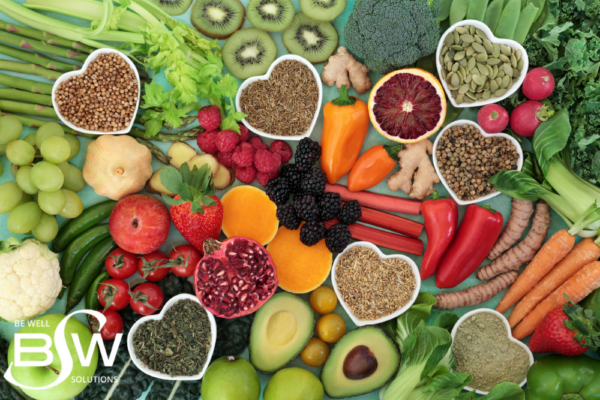Our daily food choices directly impact our health, especially our heart health. While we don’t have control over every risk factor for heart disease, we can control our nutrition. The good news is that you don’t need an extreme fad diet to see a positive impact. Here are a few tips that go a long way for heart-healthy benefits.
- Eat the Rainbow
The different colors in fruits and vegetables point to various nutrients and have specific benefits. For example, red varieties, such as beets and strawberries, contain lycopene. Lycopene can promote heart health and lower stroke and cancer risk. Choosing a variety of colorful fruits and vegetables ensures an assortment of nutrients. Check out Mayo Clinic1 for more information on the health benefits of each color.
- Choose Healthy Fats
Fats are a vital part of your diet for energy and function. However, not all fats are created equal. Saturated and trans fats should be limited or avoided because they can raise bad cholesterol and increase the risk of heart disease. Incorporate unsaturated fats more often because they can help to lower bad cholesterol and triglycerides. For examples of these fats and more information, visit the Dietary Fats page from The American Heart Association2.
- Watch Sodium Intake
Too much sodium can directly affect your blood pressure and increase your risk for heart disease. The American Heart Association3 recommends that adults have less than 2,300mg of sodium daily, with an ideal limit of less than 1,500mg daily. Watch out for frozen, canned, and processed foods that are typically higher in salt content. Choose fresh or no salt-added varieties when cooking, and season with salt-free herbs and spices.
- Go for Whole Grain & High Fiber
Don’t cut out the carbs and miss out on necessary nutrients. Instead, choose nutrient-dense and fibrous options like fruits, veggies, and whole grains. Whole grains are a great source of dietary fiber, B vitamins, and minerals like iron, magnesium, and selenium. For more information on choosing healthy whole grains, visit My Plate4.
- Limit Added Sugar
It’s easy to take in more added sugar than you think. It’s a common contributor to increased calorie intake and can make it harder to manage weight. Added sugar is any sugar or syrup added to foods during processing or preparation and not naturally occurring, like in fruit and milk. The American Heart Association5 recommends limiting added sugar to less than 25g for women and less than 36g for men. Watch out for the added sugar content in beverages and processed foods.
- Watch Your Portions & Eat Mindfully
Pay attention to your portions and be intentional about your eating choices. When you stop to think about what, where, when, why, and how much you eat, you’re more likely to make healthier decisions with food. Research has shown that it can take your brain up to 30 minutes to realize that your stomach is full (Cleveland Clinic6). In that time, you can eat more than you intended and feel stuffed. Be mindful of your food, enjoy it, plan it out, and be intentional. All these things can help you stay on track with healthier eating.
Continue Reading February 2024 Newsletter: HIIT vs. LISS Which Cardio Workout is Right for You

